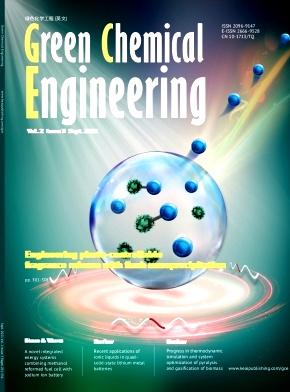[N1111][Triz]-H2O溶剂捕集CO2的热力学模型与分子动力学研究
IF 7.6
Q1 ENGINEERING, CHEMICAL
引用次数: 0
摘要
减少人为二氧化碳排放的迫切需要推动了节能碳捕获系统的发展。本研究采用实验与计算相结合的方法研究了[N1111][Triz]-H2O混合溶剂对CO2的捕集效果。采用热力学分析、相平衡测量和分子动力学(MD)模拟相结合的多尺度方法来阐明吸收机理和组成-性质关系。热力学分析结合亨利定律、活度系数非随机双液(NRTL)模型、Redlich-Kwong方程和反应平衡约束,准确预测了气液平衡(GLE)行为,R2为99.1%,平均绝对相对偏差(AARD)为7.76%。[N1111][Triz]-H2O混合溶剂表现出优异的CO2吸收性能,在313.15 K和0.025 MPa (wIL = 80%)条件下,由于物理化学相互作用的协同作用,其CO2吸收容量为0.25 mol/mol。MD模拟揭示了CO2在[N1111][Triz]-H2O混合溶剂中的动态吸收过程:CO2分子优先在气液界面积聚,然后逐渐扩散到体相。增加[N1111][Triz]含量通过提供更多的相互作用位点来提高CO2的吸收能力,而水调节界面行为和扩散动力学。本研究深入了解了[N1111][Triz]-H2O混合溶剂对CO2的吸收行为,为开发高效的CO2捕集溶剂提供了理论支持,并突出了其工业应用潜力。本文章由计算机程序翻译,如有差异,请以英文原文为准。
![A multiscale investigation combining thermodynamic modeling and molecular dynamics study on CO2 capture with [N1111][Triz]-H2O solvent](https://img.booksci.cn/booksciimg/2025-7/103308831051787809689.jpg)
A multiscale investigation combining thermodynamic modeling and molecular dynamics study on CO2 capture with [N1111][Triz]-H2O solvent
The urgent need to mitigate anthropogenic CO2 emissions has driven the development of energy-efficient carbon capture systems. This study investigated a [N1111][Triz]-H2O hybrid solvent for CO2 capture using integrated experimental and computational approaches. A multiscale methodology combining thermodynamic analysis, phase equilibrium measurements, and molecular dynamics (MD) simulations was employed to elucidate the absorption mechanisms and the composition-property relationships. The thermodynamic analysis, incorporating Henry's law, the non-random two-liquid (NRTL) model for activity coefficients, the Redlich-Kwong equation, and reaction equilibrium constraints, accurately predicted the gas-liquid equilibrium (GLE) behavior, achieving an R2 of 99.1% and an average absolute relative deviation (AARD) of 7.76%. The [N1111][Triz]-H2O hybrid solvent exhibits exceptional CO2 absorption performance, with a capacity of 0.25 mol/mol (at 313.15 K and 0.025 MPa for wIL = 80%), attributed to synergistic physical-chemical interactions. MD simulations reveal the dynamic CO2 absorption process in [N1111][Triz]-H2O hybrid solvents: CO2 molecules preferentially accumulate at the gas-liquid interface before gradually diffusing into the bulk phase. Increasing the [N1111][Triz] content enhances CO2 absorption capacity by providing more interaction sites, while water modulates interfacial behavior and diffusion kinetics. This research provides in-depth insights into the absorption behaviors of [N1111][Triz]-H2O hybrid solvents for CO2, offering theoretical support for the development of efficient CO2 capture solvents and highlighting its potential for industrial implementation.
求助全文
通过发布文献求助,成功后即可免费获取论文全文。
去求助
来源期刊

Green Chemical Engineering
Process Chemistry and Technology, Catalysis, Filtration and Separation
CiteScore
11.60
自引率
0.00%
发文量
58
审稿时长
51 days
 求助内容:
求助内容: 应助结果提醒方式:
应助结果提醒方式:


